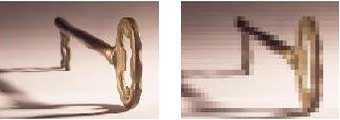Pixelate Effect
With the Pixelate Effect, you can create graphic blurs. This effect groups pixels in squares and applies the average color of all contained pixels to the square.

Pixel Size
Pixel Size defines the number of neighboring pixels that this effect will group. The larger the size of pixels (squares), lesser will be the number of squares (and the less details) in the image.
Keep pixel size constant
Check this option if you want the size of pixels to remain constant throughout the duration of the effect. Deselect the option to start with the original image and then gradually increase the size of pixels to reach the specified size at the end of the effect's duration.
|